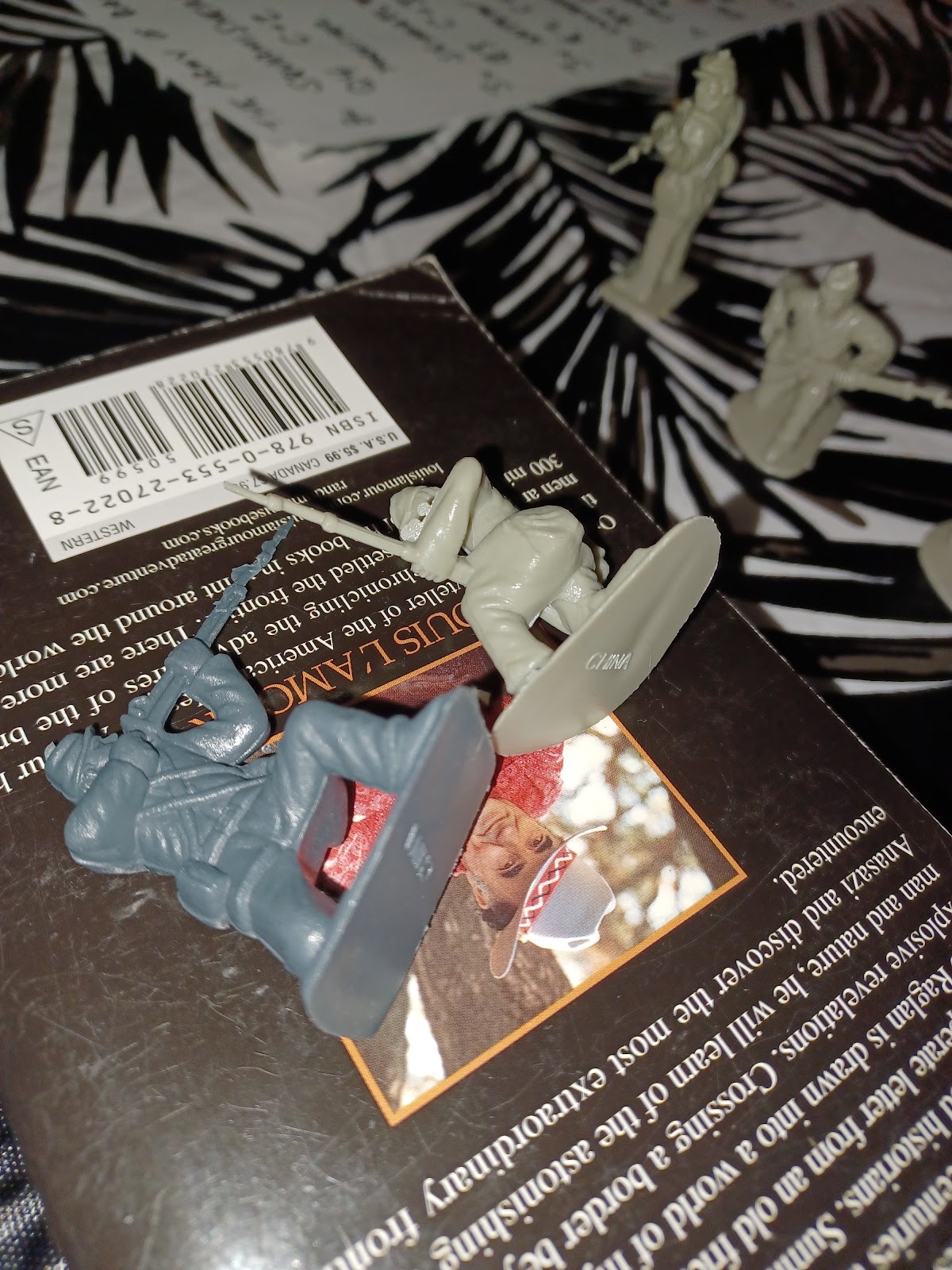REVIEWS vs READ-THROUGHS
I've occasionally ranted about the lack of a 'proper' review culture in RPGs - especially OSR circles - so let's take a moment to talk about reviews versus read-throughs. With the recent Doom That Came To Astreas read-through on the blog, and much of July's content also involving read-throughs of giant-themed adventures, I wanted to get some standards straight.
I resolved some time ago not to call something a 'review' unless I'd actually run the adventure or used the material (if a sourcebook or ruleset). It's that simple. That's my standard. It doesn't have to be your standard or anybody else's (although I often wish it were), but when you're here at Wampus Country, that's what that word means.
Conversely, a read-through is just that - a look at the book and its content (whether quick or more considered), with running commentary and some chat about how I might use what's in the book, and whether it seems useful and a good value. Some people call this a 'review'. Those people also review movies by watching the trailer, or restaurants by looking at the menu in the window.
Read-throughs can be entertaining but they are of minimal value relative to a full review. Unfortunately it's a feature of our hobby that investing the time to do a proper review can be a challenge - you can only run so much material, and it takes time. It is with some irony I note that 5e playculture, which often has hundreds of DMs running the latest hardcover at the same time, produces a lot more "so I just ran this, and here's what I did" content than the OSR does. OSR reviews of tried-and-true classics are out there (imagine if everyone who ran Keep on the Borderlands invested a little time in talking about it), but outside of the top adventures, you're not going to find a deep bench. Even the haute scenario du jour will get read-throughs when it's published (or in Kickstarter phase), and then not much. For example, throw 'Deep Carbon Observatory review' into your search engine of choice and see how many essays are by people who actually ran the adventure, relative to how many people really enjoyed reading the book. And that's a well-received that's been out for years. Does the "scene" fall in love with a thing, just to abandon it and move on to the next one? (I think: yes, that's what a "scene" is, but perhaps that's a debate for another time).
Anyway, I encourage you to share your thoughts on products, either in a read-through or a thorough review - just be clear about your actual experiences with the product.
A FISTFUL OF FLOWERS
And now, a read-through of Pathfinder's Fistful of Flowers.
Fistful of Flowers is Paizo's 2022 Free RPG Day offering for Pathfinder 2e. As you'd expect, it's a short, slickly-produced one-shot adventure featuring a mascot species. For years Pathfinder gave us Free RPG Day content about goblins, to great acclaim (it's easy to like Pathfinder's chaotic-silly goblins for one-shot content). These days, it's all about leshies.
The leshy, in Pathfinder, is a nature spirit bound into a plant, which takes on an ambulatory humanoid form. Little plant-people. The illustrations of leshy in the Pathfinder materials are suitably cute, so I can see why they have some appeal, and since there are multiple types of leshy crafted from lots of different plants, they are endlessly customizable.
Fistful of Flowers gives us a short adventure for four 3rd-level leshy (pregens are provided, or roll your own leaf-person -- get it, roll your own?). In it, these leshy guardians are dispatched to rescue kidnapped leshies from a cruel aristocrat sorceress who's been collecting (kidnapping, buying) the little plant-folk for display in her garden. Just the latest thing this season, darling, don't you know? So the hook is pretty good for a one-shot - spend some time as plant-people, liberate other plant-people from the bad guy, and all with this ostensible aristocrat tea-party vibe. The book does a fine job of having illustrations of everything you'll meet or fight. There are battlemaps, but there isn't much to them.
There isn't much to the adventure. The tracking of the missing leshies, investigating the abandoned campsite of the guy who stole them, chatting with a pixie. Then it's off to the village to track the thieving alchemist who grabbed the leshies. The fight with the alchemist is probably interesting, especially since he's backed up by a pair of candle homonculi. The gimmick of the candle-constructs hopping in the cauldron of hot wax to heal themselves is fun. PCs will learn from the defeated alchemist that Lady Constance is the one paying to have leshies kidnapped. You show up at her manor, crash her tea party, and fight her four leshies in a 4-on-4 showdown. Each antagonist leshy has a gimmick to use in combat, which is good and should keep things interesting. There are no stats provided for Lady Constance, although we know she's a 5th-level sorceress, so perhaps there's a standard statblock for that in one of the PF core books. Still, what spells does she have? And if they're the standard array, why? Lame. The adventure has Lady Constance shriek and flee, and not engage if there's combat except as a last resort. I don't really understand that choice, surely she must be brought to justice? We're meant to believe that the other ritzy party guests deciding Constance is deplorable is sufficient to curtail her activities (even though she's Neutral Evil).
Let's be clear, the main advantage in using this short adventure is if you're a PF2e person. The statblocks would be difficult to faithfully translate to another game without considerable pre-work, and I worry that reducing everything to something light (Into the Odd, let's say) would be reductive of the clever mechanical stuff nested in the PC sheets. Or, in other words, "let's do a session with flower-people rescuing flower-people from a tea party" is probably all you'd need if you're running something light - you wouldn't need these pages.
The adventure tells us that Lady Constance kidnaps leshies, but also that she owns/sponsors the four that are loyal to her. This is a bit of a weird choice, because it robs us of having Lady Constance go full-on Poison Ivy as a final-battle villain. I would consider, instead of Lady Constance being a statless generic sorceress, set her up as an evil plant wizardess and do MORE with plants. Do the tropes; let's have a hedge maze, and some carnivorous plants to fight. Make her a Zuggtmoy cultist or something. All these plants and no talk of poison anywhere. She's a sorceress so she doesn't even have a spellbook you can take (to learn uncommon plant-based spells)! Give me some plant puns, I want to fight a dandy-lion. If you're going to do it, do it. You could expand this concept into a couple-session thing instead of limiting it to "must be playable in a con slot". You could also plant seeds (ha!) of other adventures - maybe Lady Constance, being a plant-mage, has correspondence with Abelia Prem (The Stygian Garden of Abelia Prem), or the plant wizard from Three Sad Wizards, or any other planty thing you can think of.
The greatest disappointment is that despite the title there are no riffs or gags on A Fistful of Dollars in here, although I'm sure next year's offering will be A Few Flowers More.


.jpg)












